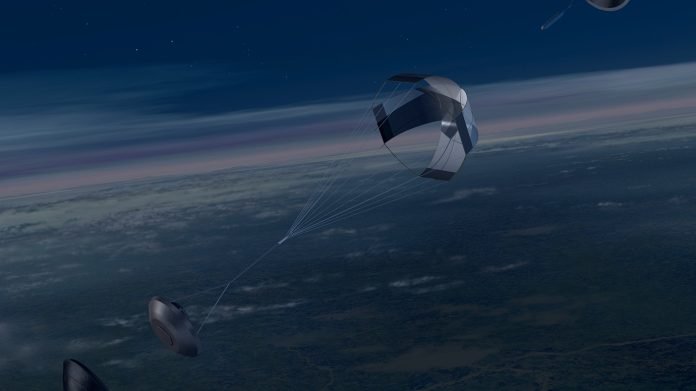
An analysis of rock scooped directly from the surface of an asteroid by a Japanese spacecraft suggests that it was once a comet that lost its tail.
A new study lays out a new theory for the origin of the asteroid known as Ryugu.
It suggests asteroid Ryugu originally formed alongside the ice giants Neptune and Uranus and spent time circling the sun as a comet before making its way to the asteroid belt near Earth.
If confirmed, the finding has implications for our understanding of the early solar system and how the planets and asteroids ended up where they are today.
“That’s very exciting, because it means that by looking at asteroids in the main belt, we can learn about the solar system all the way out to where the ice giants were formed,” said co-author Nicolas Dauphas, Professor of Geophysical Sciences at the University of Chicago and an expert on the origin of the solar system.
Isotopic fingerprints
In 2018, a spacecraft launched by the Japanese space agency JAXA met a speeding asteroid and spent nearly a year taking readings and samples.
Then it took off and returned to Earth in late 2020, with its precious payload of dust and rocks from the asteroid miraculously intact.
We have never had a pristine sample of an asteroid before; the ones that make it through Earth’s atmosphere to land as meteorites are altered by the process.
And asteroids have a lot to tell us—they witnessed the formation of the planets and contain records of the conditions they experienced over the last billions of years. Scientists have been eagerly running every possible test on the fragments.
One such analysis was run by an international team of scientists, including Dauphas and Timo Hopp—then a postdoctoral researcher at the University of Chicago—who analyzed the asteroid’s isotopic “fingerprint.”
Elements come in different flavors with different masses, which are called isotopes. Any given rock will have different amounts of different types of these isotopes.
Because they vary depending on the source of their original material and the conditions around them, they can tell scientists quite a bit about the rock’s origins.
In particular, matching isotopic fingerprints can point to rocks that formed at the same place and time. The team found that Ryugu looked like part of a group called Ivuna-type carbonaceous chondrites.
Based on these and other measurements made of the Ryugu samples, the scientists proposed a new theory for how the asteroid population of the solar system evolved.
Born with the ice giants
In the earliest days of the solar system, the young sun was surrounded by a disk of gas and dust known as a protoplanetary disk.
Over time, the material clumped together, forming the planets we know and love today—as well as smaller chunks that became the asteroids.
Many of them wound up in the “main belt” of asteroids between Mars and Jupiter. Previously, it was thought these asteroids hadn’t moved very much from where they formed.
But the scientists suggested that some of these asteroids came from much further out in the solar system. One group formed near the gas giants, Jupiter and Saturn. Another group formed even further out.
“This reservoir was located in the outer regions of the protoplanetary disk, possibly in the vicinity of the birthplaces of the ice giants Uranus and Neptune,” said Hopp. That group is the one Ryugu matches.
Some of these faraway asteroids were flung away from the planets as comets. Eventually the sun’s gravity captured them, sucked them inwards, and burned off their water and tails. This is what the scientists think happened to Ryugu.
Because these asteroids formed so far away from the sun, they could contain ice that later melted. This matches with other analyses of Ryugu showing that the rock was weathered by water in its past.
The theory also lines up with the fact that scientists have catalogued three different types of meteorites that have fallen on Earth.
They are known as carbonaceous chondrites (CC); non-carbonaceous chondrites (NC); and Ivuna-type carbonaceous chondrites (CI), an oddball group that is like carbonaceous chondrites but with different iron isotopic composition.
In this theory, the NC group formed in the inner solar system and stayed there; the CC group formed near the gas giants; and the CI group formed near the ice giants.
“The new finding completely overturns our previous idea that Ryugu and CI were just a part of CC meteorites that were born in a similar location of the early solar system,” said co-author Prof.
Tetsuya Yokoyama of the Tokyo Institute of Technology, whose lab processed and prepared the samples of Ryugu for testing. “I am happy that I have been involved in decoding a secret of the solar system in this manner.”
“There is more work to be done to confirm this theory, but if it’s true, it would be very exciting because it’s very difficult to bring back samples from those regions of the solar system,” explained Dauphas.
“But in this case, we could look at these asteroids near us and learn about things much further away. We are probably sampling some of the material that was in the outer disk when the sun was born.”
In the next decades, scientists are expecting the arrival of several more pristine samples retrieved by spacecraft; each one will reveal more about the history of our solar system.
“That’s the excitement of exploring the unknown—you never know what you’re going to find,” Dauphas said.
Written by Louise Lerner.
Source: University of Chicago.



